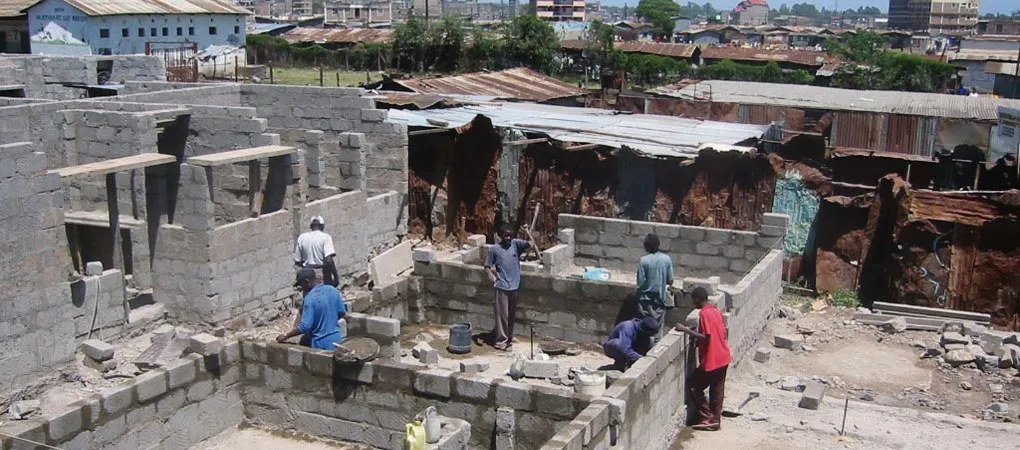
The biggest challenge of housing is the shortage of housing. The demand by the population is too high for the government to supply houses at the same pace. In order to decrease the gap between demand and supply, different approaches have been analyzed and used.
It is important to note that providing housing is not only providing a dwelling but basic services as well. In other words, the government aims to provide or create human settlements. The “product” is housing, but it is achieved by the “process” of creating human settlements.

Housing Demand, Housing supply and Affordability
Housing demand can be described as the willingness of an individual to purchase a house or property, but also the financial ability. The housing demand is influenced by the size of the population and their “wants” not their “needs". The population may not need housing or new housing but rather, they want new housing. This places extra responsibility on planners and the government to deliver more than is needed at higher costs.

Housing demand is influenced by what people need, what they want and what they can afford.
Source: https://housing.com/news/impact-of-covid-19-on-housing-demand/
Housing supply is the ability of planners, the government and construction companies to provide new and improved housing, along with basic services. The availability of building materials, money and labour will affect the housing supply. The supply will also influence affordability.
The affordability of housing indicates the balance between the price of new housing and the total income of the individual or family. Low-income households will typically have smaller houses, while high-income households will have larger more modern houses.

Where you live is depend on your income. A household should not spend more than 30% of its monthly income on housing.
Source: https://www.riseservices.org/affordable-housing/
Housing Affordability plays an important role in both the demand and supply of housing. Households of all social and economic classes should be able to afford a house, making this possible by planners and governments. While some classes demand new and improved modern houses, other classes may demand infrastructure and basic services. The demands can be met by providing subsidies, housing support and credit, land, infrastructure and services and a housing environment.

Source: https://theweek.com/cartoons/983074/editorial-cartoon-housing-prices

Subsidies and support
Supplying individuals with finance or material creates transparency, discipline and freedom of choice. The aim of subsidies is to offer basic services, some security and a basic formal structure.
The subsidies should be equal in all communities. Living standards and housing standards may differ across nations, but it is important for subsidies to meet the basic human needs of housing. Maximum flexibility needs to be allowed in subsidies and provision needs to be made for any hidden subsidy costs.

Housing subsidy program (FLISP) in South Africa. The country has many different housing programs such as RDP, GBA and FLISP.
Source: https://veliletintocape.co.za/flisp-housing-subsidy/
Households will have access to the housing they can afford. With subsidy being one way to improve housing, another is to provide housing or support towards housing. This includes governmental housing or housing support mechanism, that will assist individuals to build their own homes. This is also known as self-help housing.
Self-help housing allows individuals to assist themselves by means of receiving help from the government or private sector. The support may be financial, provision of building materials or building plans, or education of the community on how to build their own houses. This creates some sort of community connection and allows individuals to be proud of what they have achieved.

Self-help housing can either provide materials, guidance or financial aid. These people will build their own homes with assistance from real builders. These types of houses are usually built outside building regulations but are still safe and a place to call home.
Source: https://world-habitat.org/world-habitat-awards/winners-and-finalists/technical-team-planning-for-self-help-housing-in-the-kambi-moto-community/
Self-help housing may not be up to building standards, but with the right support, the individual can provide for themselves and lower the demand on the planners and government.

Sources
Please note that I make use of various articles to form my posts. All articles used are listed below. Feel free to download and read them!
Department of Housing, 1994. White Paper: A New Housing Policy and Strategy for South Africa.
Fuller Housing Center. 2014. Housing Delivery in South Africa. South Africa, Western Cape.Henilane, I. 2016. Housing concept and analysis of housing classification. Baltic Journal of Real Estate Economics and Construction Management, 4(1), pp.168-179.
Hewes, M. 2017. Housing Needs Are Different To Housing Demand. [online] Ft.com. Available from: https://www.ft.com/content/f0bc36c6-d6d6-11e7-8c9a-d9c0a5c8d5c9
Sheibani, G., & Havard, T. 2018. Housing Concept, Problem, and Policies. [online] Available from: https://www.irbnet.de/daten/iconda/CIB16799.pdf



